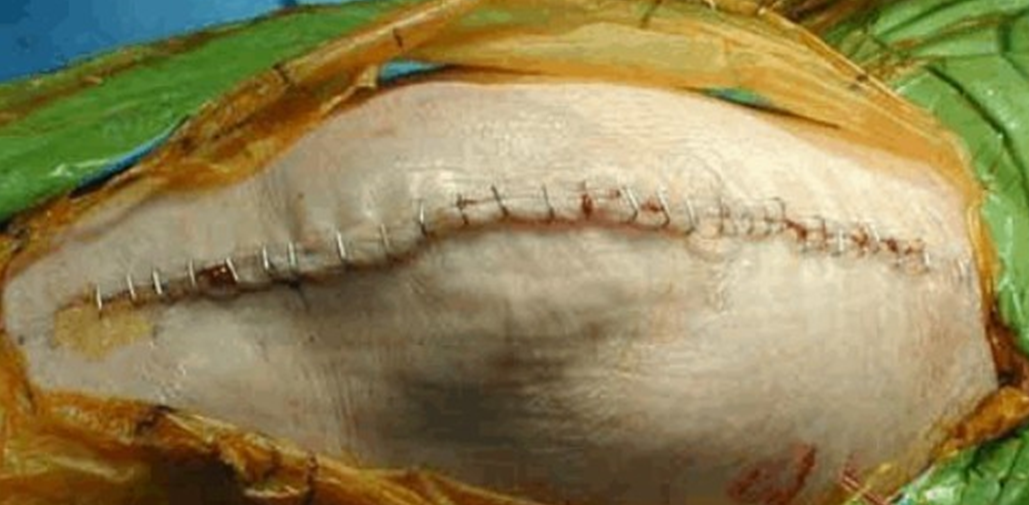...sized appropriately?
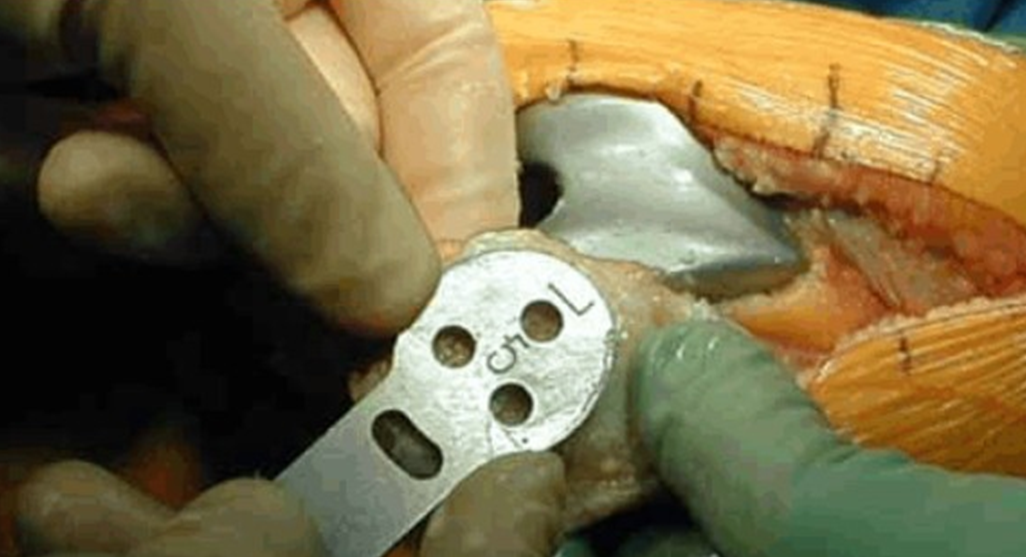
...and fitted with a trial component. Any adjustments are made after taking the knee through a series of motion and stability tests.
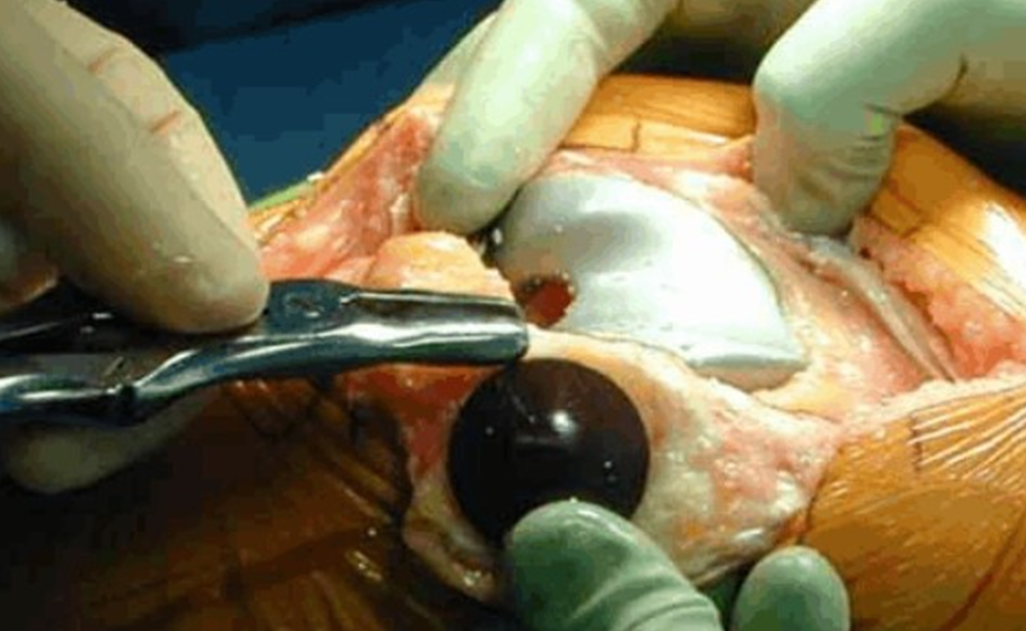
The trial components are removed for a final time.
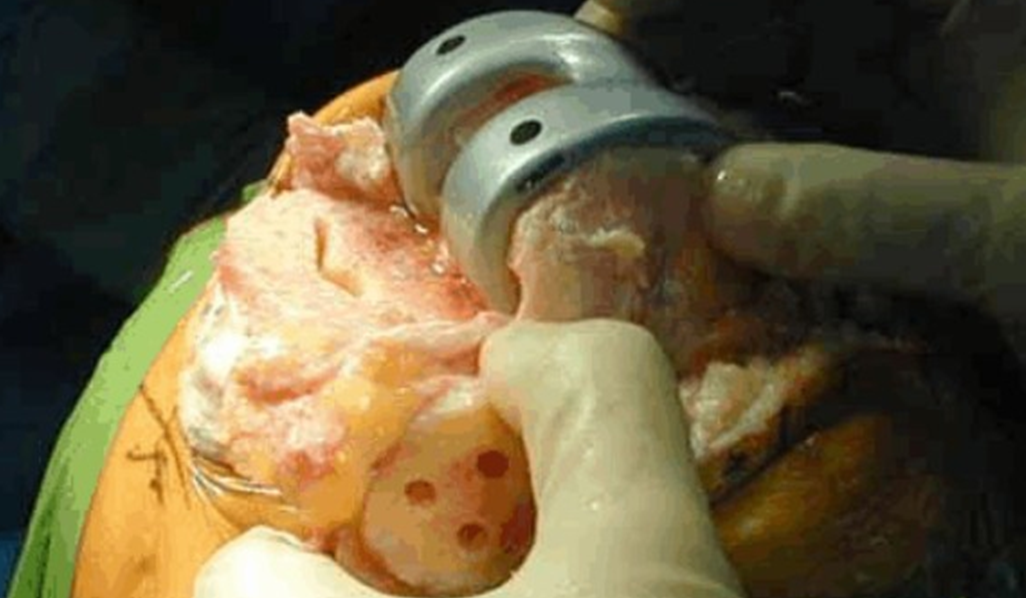
All prepared surfaces are inspected for a final time.
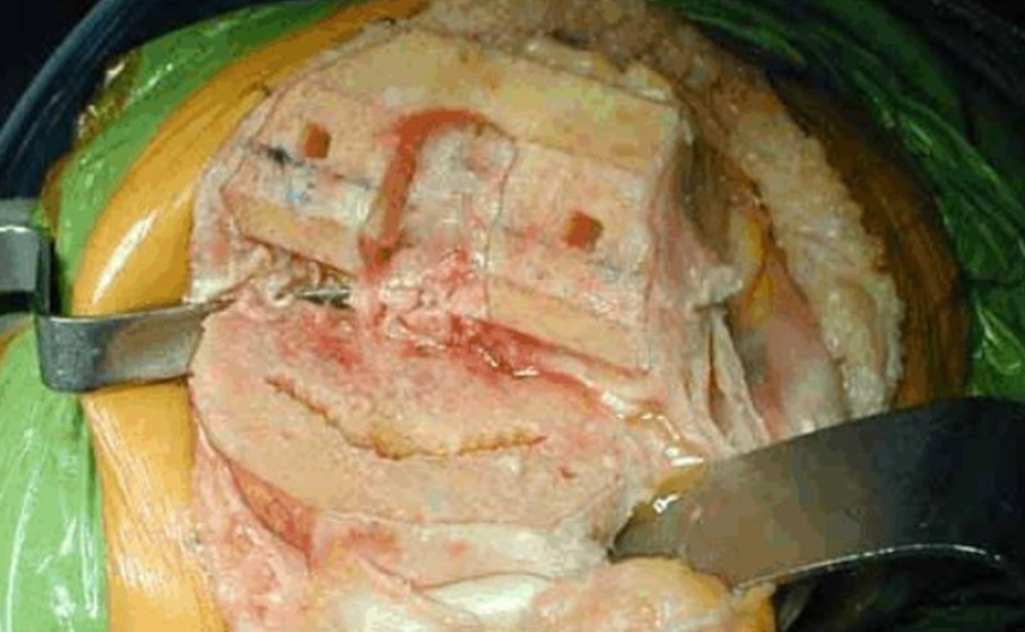
The raw bone surfaces are the irrigated with antibiotic solution using a pulsatile lavage system. This removes loose bony fragments and particles.
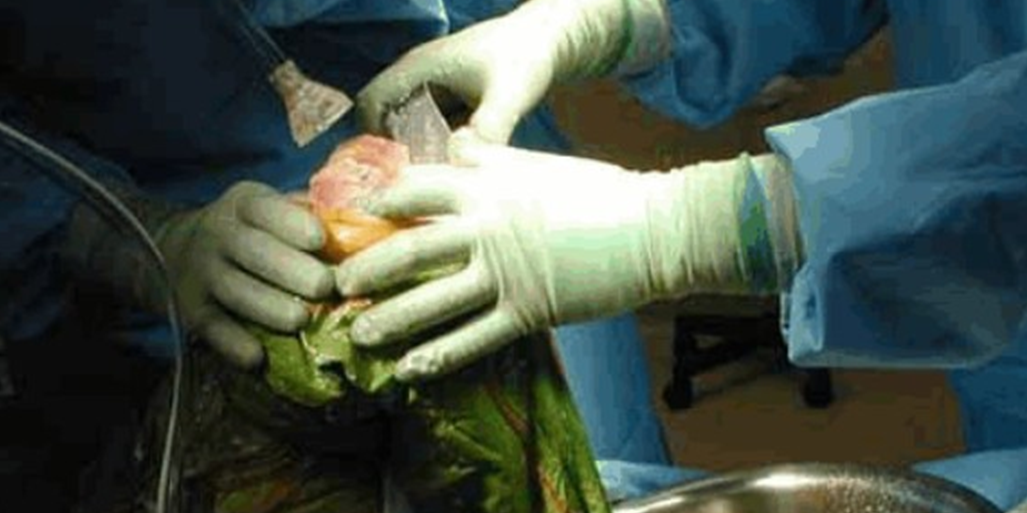
After irrigating, the bony surfaces are dried and polymethyl methacrylate bone cement is applied to the end of the femur.
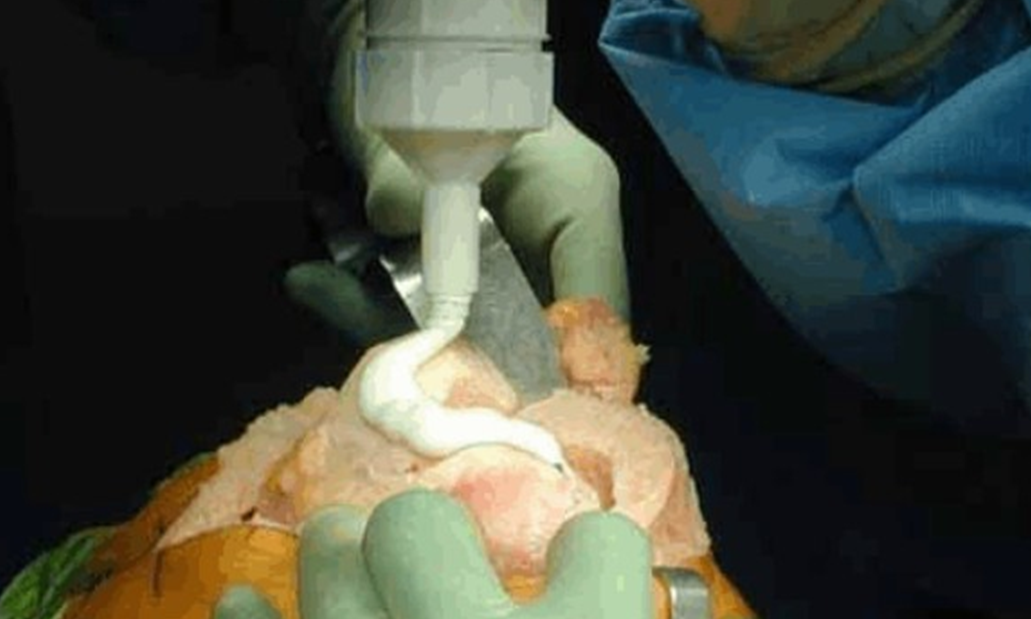
The actual femoral stainless steel implant is then positioned and impacted for a perfect fit.
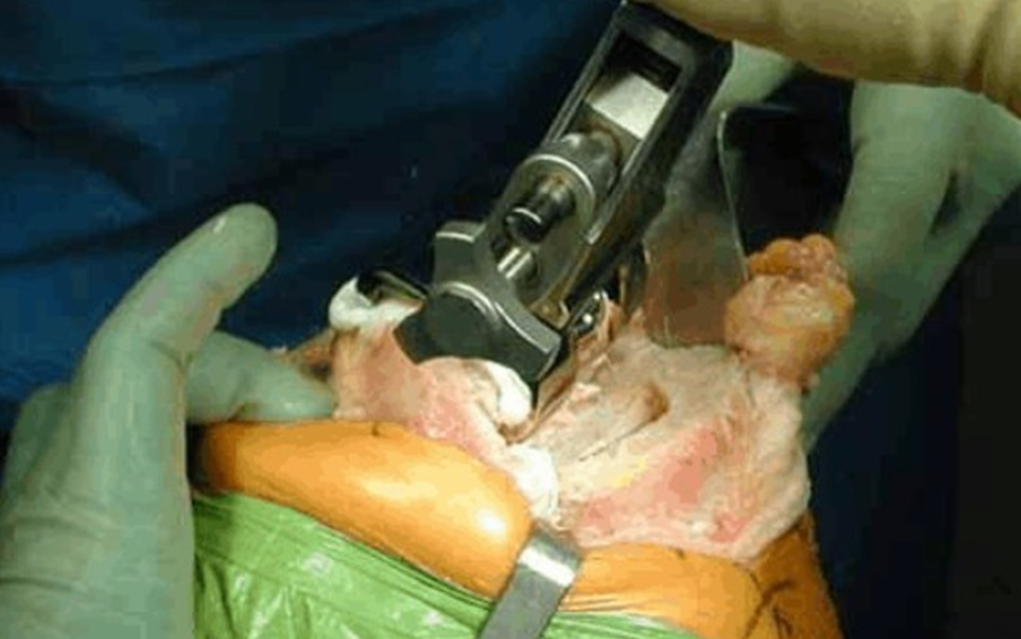
Excess bone cement is removed.
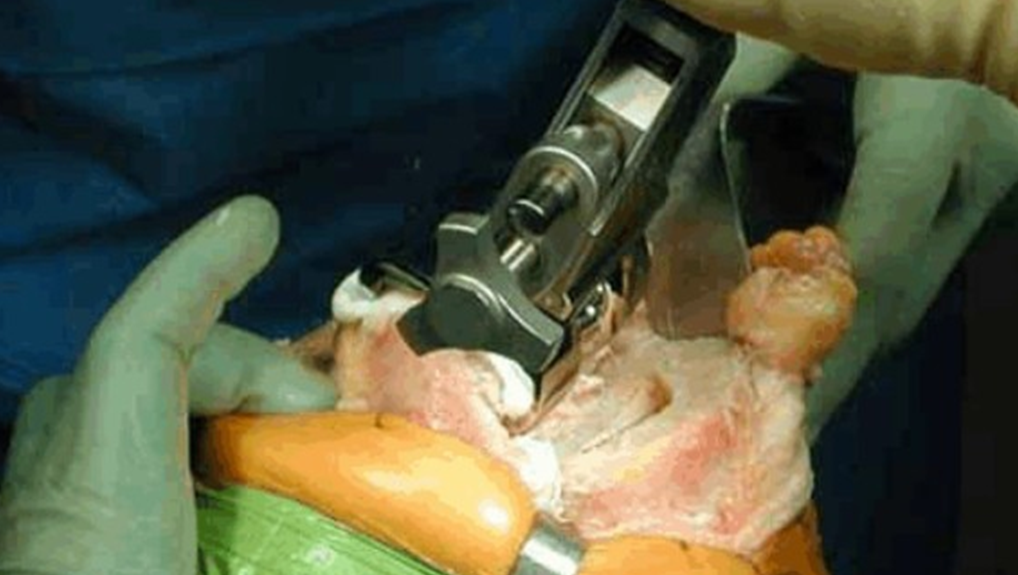
The final implant is inspected.
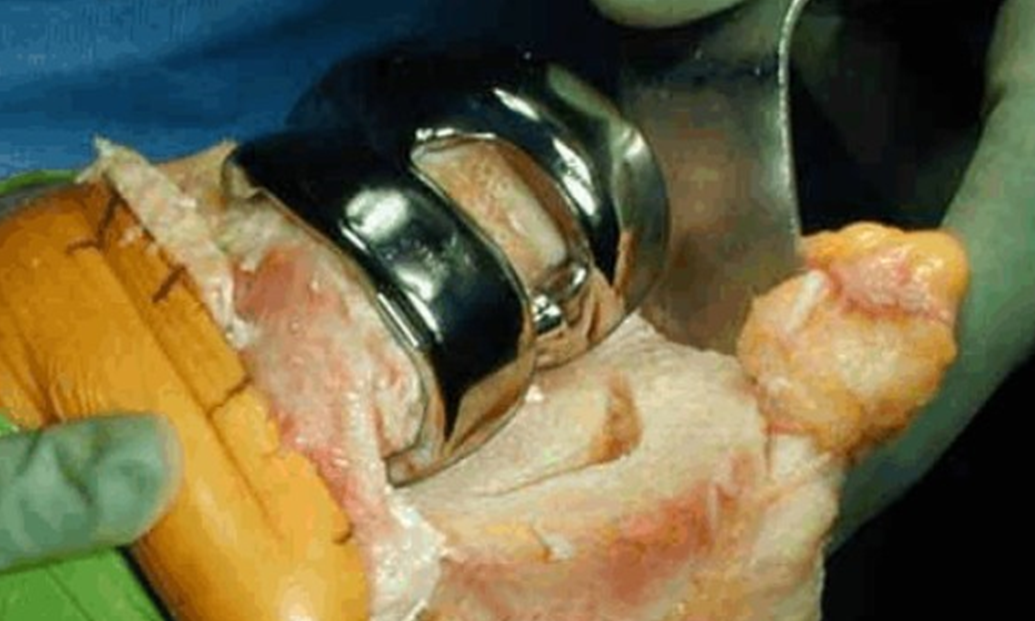
Cement is then applied to the proximal tibia and pressed into the interstices of the tibial bone.
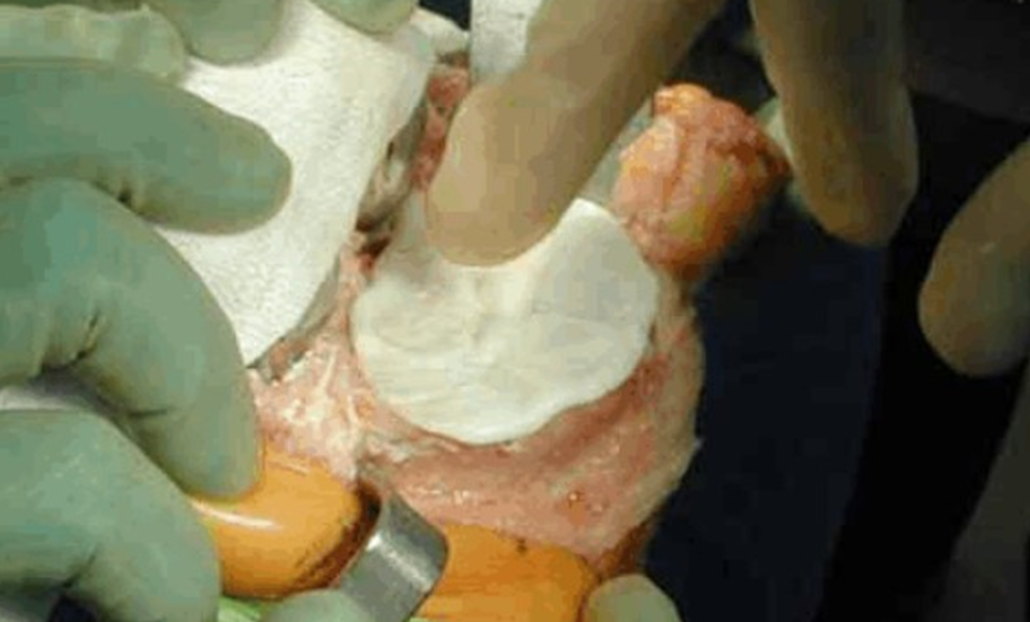
The actual tibial implant is then pressed into position.
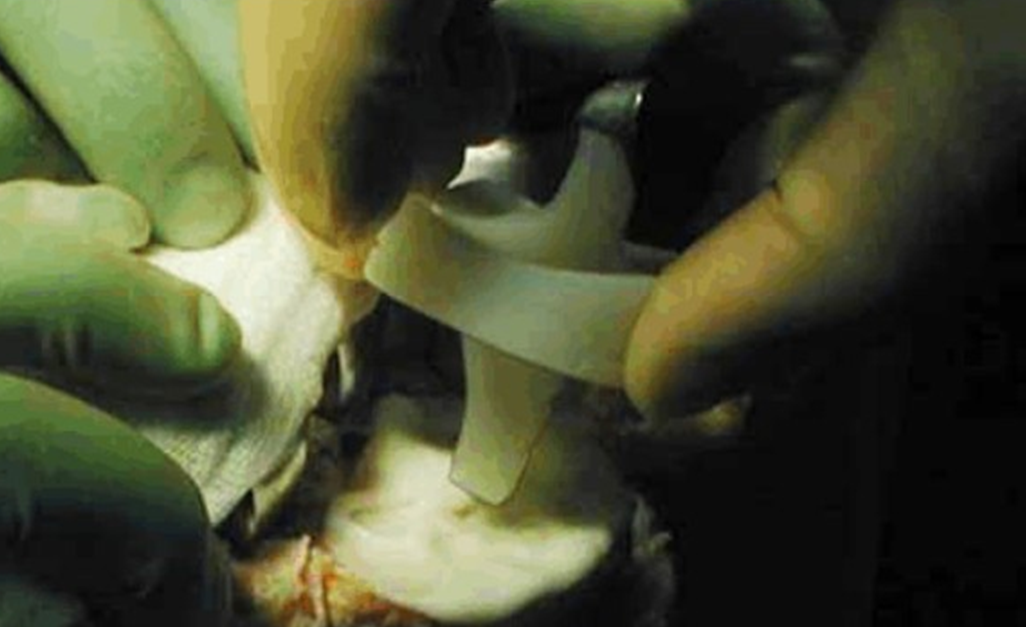
The tibial implant is also impacted for a perfect fit.
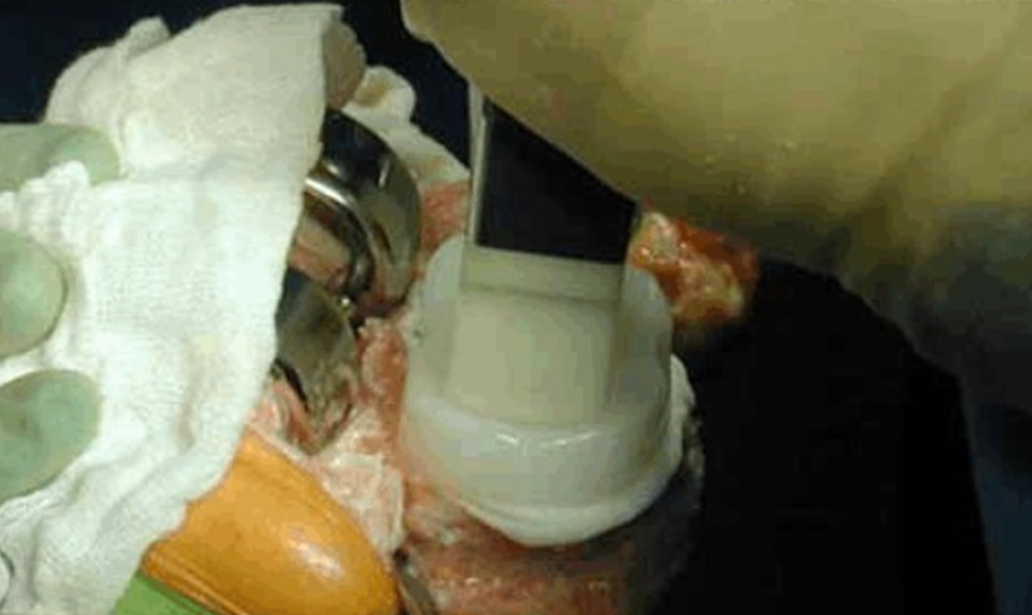
Excess cement is removed.
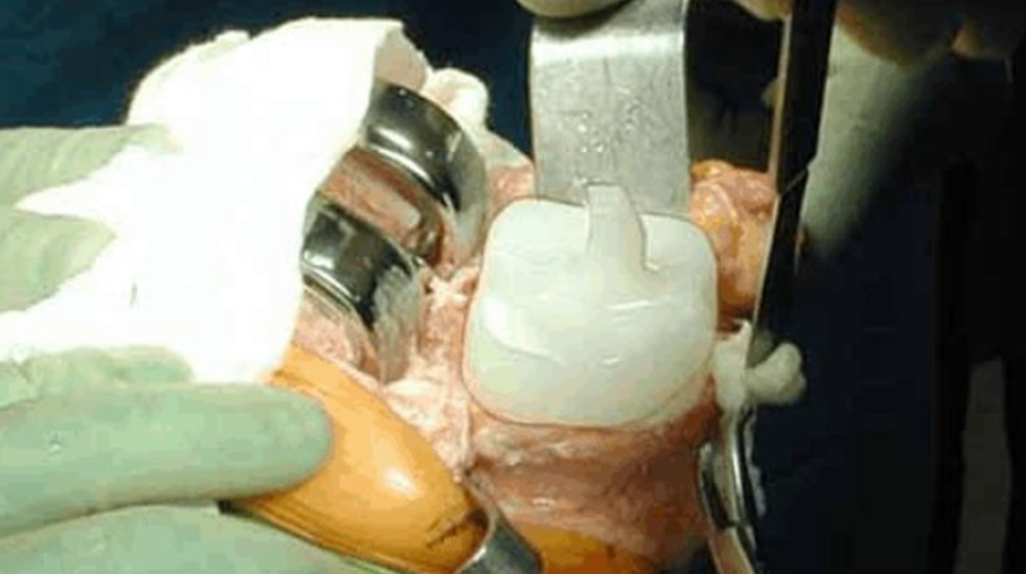
Bone cement is applied to the patella last.
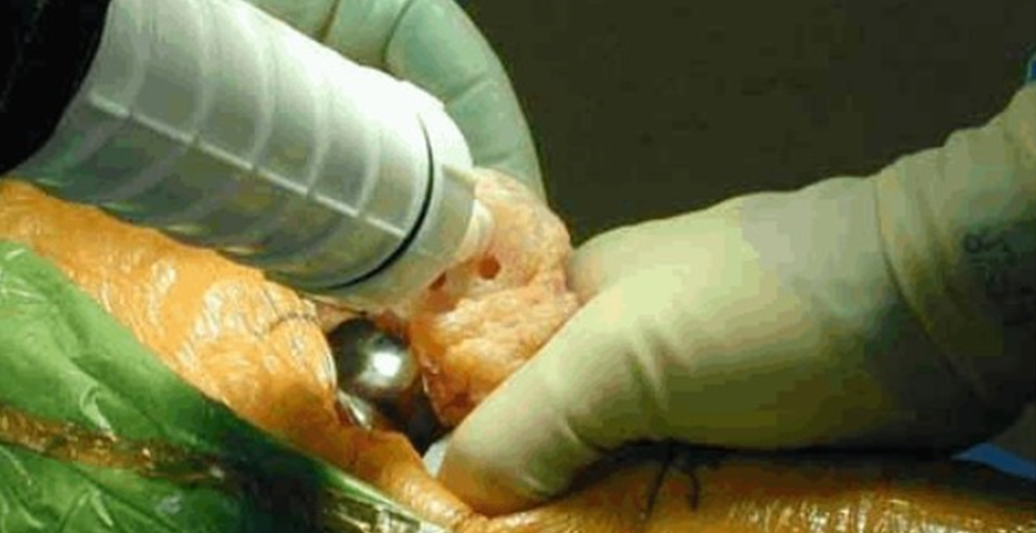
The cement is pressed into the bone.
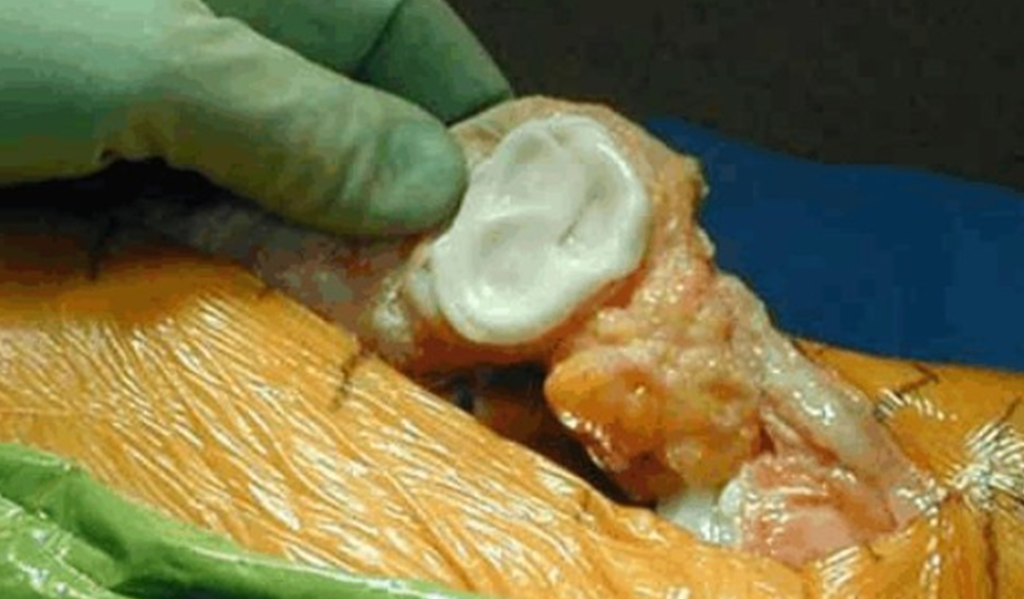
The polyethylene patellar button is then held in position with a clamp.
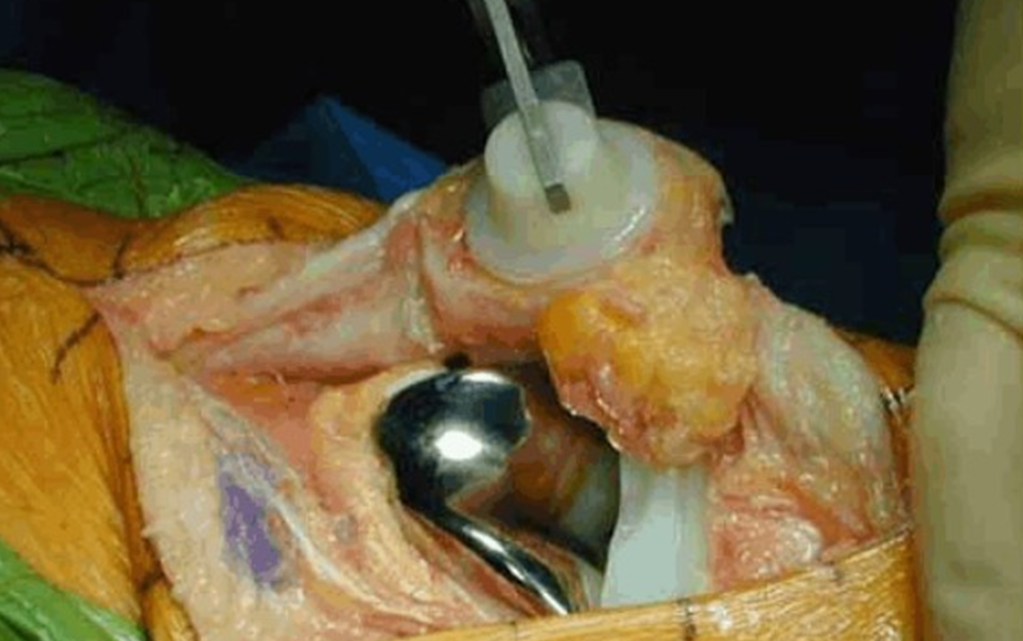
The knee is extended and irrigated a final time.
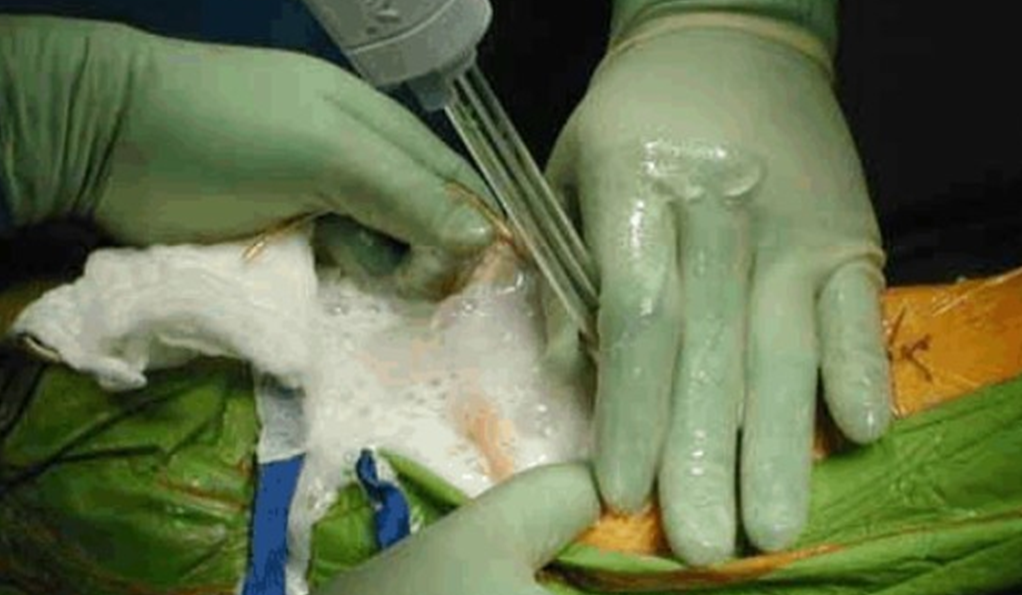
The newly placed implants are taken through a series of motion and stability tests and then inspected again.
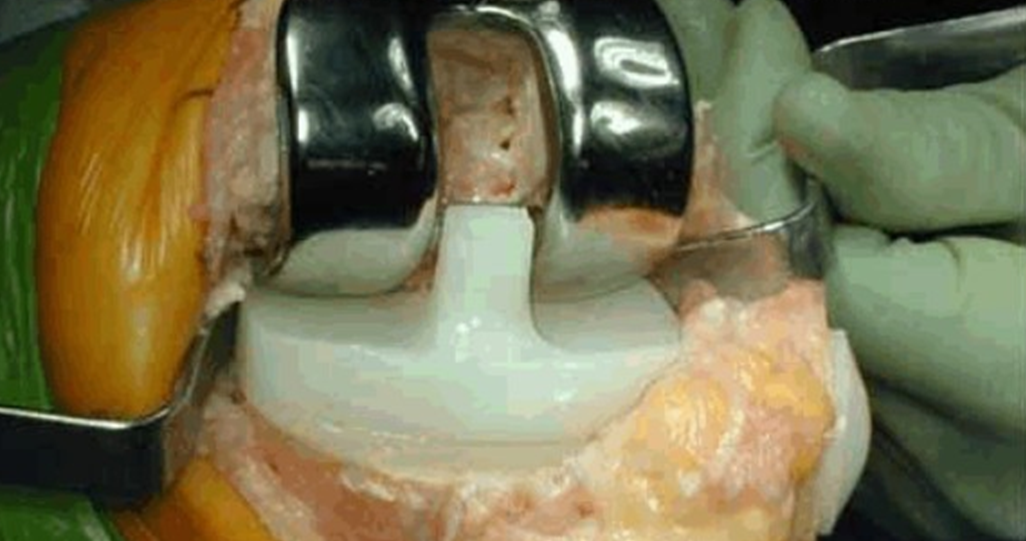
The quadriceps tendon and retinaculum/capsular layer are repaired using #2 PDS interrupted, figure-of-eight sutures.
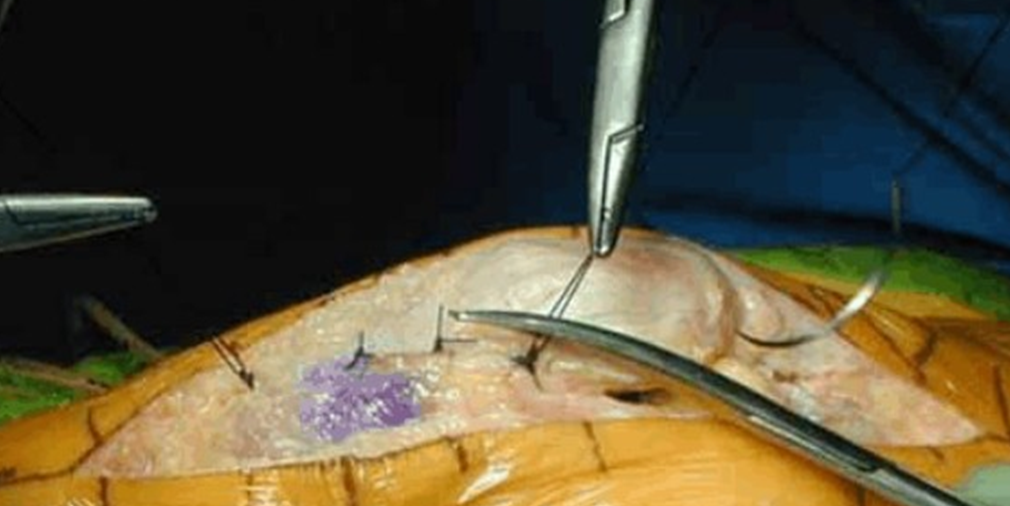
Once the arthrotomy is repaired maximum knee extension and flexion are measured. This is the best way to predict potential post-operative range of motion. Incomplete extension or inadequate flexion may result in gait abnormalities and problems with activities of daily living.
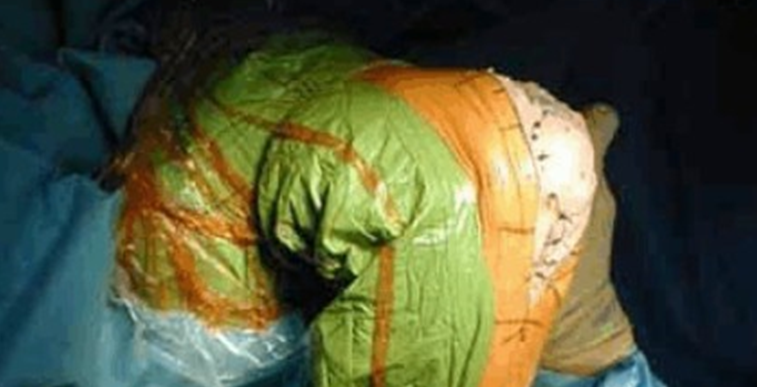
After motion assessment, the subcutaneous tissues are closed and the skin approximated.
Staples are used for skin closure and removed in two weeks’ time. Range of motion is begun immediately and a standard therapy protocol is begun. The patient will be allowed to bear full weight with assistance for balance.
